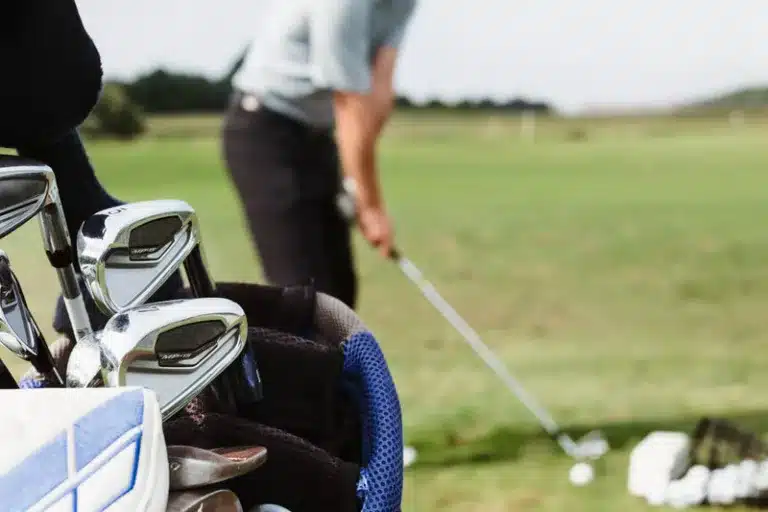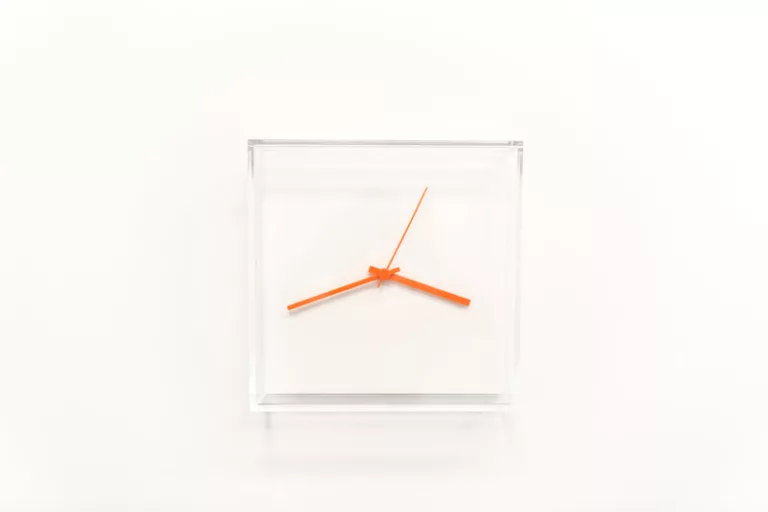The Science of Driving: Why the Driver is the Hardest Club to Hit
We all know the feeling. You’re on the tee box, looking down the fairway at the flag waving in the distance. You take a deep breath, swing, and watch in horror as your ball sails way off to the right, into the woods. If only you could hit the driver like you hit your irons. Why is it that the club we need to hit the furthest is also the hardest to hit?

Introduction
Driving can be a tedious task, but it is made even more difficult by the fact that the driver is the hardest club to hit. This is due in part to its aerodynamic properties and location in the club. An understanding of these factors will help you become a better golfer.
The Aerodynamic Profile of a Club
A golf club has an aerodynamic profile that affects how well it travels through the air. The three main components of an aerodynamic profile are drag, lift, and interference. Drag causes resistance to movement along the direction of motion, while lift creates a force that opposes gravity (Figure 1). Interference occurs when two or more objects move together through air as one object (Figure 2).
Drag reduces your drive distance by causing turbulence in front of your ball, while lift increases your ball’s velocity by creating a vacuum behind it (Tucker and Kunz 2001). Lift also decreases your moment of inertia so you can launch the ball higher into the air (Kunz 2003).
Location of Drivers on Clubs
The driver is located near the toe cup on most clubs because this area offers little interference with airflow (Garrett et al 1988). This placement makes hitting off-balance shots very difficult since you have less surface area to contact with ground without striking wood (Baxter 1997; Foley 1996). In addition, drivers are shaped differently than other clubs such as hybrids and fairways woods which add further complication to hitting them straight.

The Science of Driving
There are many factors that contribute to the difficulty of hitting a driver. In this article, we will discuss some of the science behind why the driver is such a hard club to hit.
When considering how to hit a golf ball, you must consider not just its speed, but also its trajectory. The height and direction at which the ball travels are determined by a number of factors including gravity and air resistance. However, one of the most important factors in determining how easy or difficult it is to hit a golf ball is its mass. In other words, the heavier the golf ball, the more difficult it becomes to hit accurately due to increased drag on your clubhead.
The driver is by far the heaviest club in your bag and has by far the greatest impact on your shot. This makes it especially difficult to launch an accurate drive into tight spaces or off high points on a course. Additionally, drivers are designed with relatively thick heads which greatly increases their inertia when struck with a Clubface Payne Impact divided into three parts; Speed (falling action), Power (trajectory deviation), and Moment (velocity).
Why the Driver is the Hardest Club to Hit
Why is the driver the hardest club to hit?
Engineers and physical scientists have long debated this question. One school of thought contends that it is because the driver has a larger sweet spot- an area around the clubhead where balls are struck with maximum accuracy. Another explanation suggests that it’s because drivers have more mass, which allows them to generate more power when they swing. But at its heart, this question boils down to physics: For a golfer hitting a drive, what is most important? Is it getting the ball in the air as quickly and accurately as possible? Or does he or she care about maximizing distance and accuracy?
The answer to this question depends on your individual golf game. If you’re looking for an easy shot, aim for the fairway and go for it. But if you’re striving to play at your best, taking advantage of every opportunity, aiming for the driver will be your best bet.

The Importance of Practice
The More You Practice, the More Consistent Your Swing Will Be
Practice is the key to becoming a better golfer. The more you practice, the more consistent your swing will be. This will allow you to hit the ball cleaner and farther with less effort. It’s important not to put all of your focus on perfecting each swing stroke; instead, focus on hitting as many balls as possible in a consistent fashion. Doing so will help you develop accuracy and build muscle memory.
The More Consistent Your Swing Is, the More Accurate You’ll Be
The importance of practice cannot be overstated when it comes to hitting a golf ball accurately. The more consistent your swing is, the more accurate you’ll be. And even if you can’t hit the driver 100% of the time, trying to perfect your swings with shots off the tee will help you hit better shots overall at the driving range and on the course.
The More Accurate You Are, the More Confident You’ll Be
One of the main reasons that the driver is the hardest club to hit is because it is a higher launch ball. A driver has more spin on it, which makes it harder to hit squarely. Additionally, drivers have a smaller sweet spot – almost half the size of a fairway wood’s – making them more difficult to hit accurately.
Despite these challenges, practicing regularly will help you become an excellent golfer and increase your confidence when hitting this club. By mastering proper swing mechanics and gaining familiarity with the golf course, you can overcome any obstacle and enjoy hitting drivers in tournament play.
The More Confident You Are, the Better You’ll Drive the Ball
The Importance of Practice
There’s no denying it – practice makes perfect. And if you want to be a better driver, the more time you can put in behind the wheel, the better off you’ll be. That said, there are a few other things that come into play when it comes to being a good golfer – namely confidence and self-awareness.
Confidence is key when it comes to hitting the ball in any situation, but it especially matters when your playing against someone else. When you know that you have what it takes to beat them and win, you’re going to play with more gusto and aggression. You won’t worry as much about making mistakes – instead, you’ll be more focused on putting the ball in the hole.
Self-awareness is another key factor when it comes to driving the ball well. This means that you know what you’re doing on each shot, and you can react quickly and appropriately to what’s happening around you. If you’re able to do this, you’ll be able to hit the ball in any direction with confidence, no matter what the situation.
All of these things – confidence, practice, and self-awareness – are important for anyone looking to improve their game. But if you want to take your game to the next level, you need to put all three of them together. That means spending time practicing, being confident in your abilities, and being aware of your surroundings.

Tips for Hitting the Driver
Tee Height
One of the most common mistakes golfers make is hitting the driver too hard. Too much power can cause the ball to fly off the clubface, resulting in a bad shot. Instead, aim for a tee height that is comfortable for you and hit the ball with an even amount of power. By doing this, you’ll be more likely to hit the ball in the correct direction and improve your overall golfing skills.
Ball Position
There are a few things you can do to improve your chances of hitting the driver. One is to adopt a more confident stance. The less reserved you are, the more likely you’ll hit the ball solidly. Another key tip is to set your clubface parallel to the ground at the address and release it with confidence. By keeping your clubface square on the ball and releasing it quickly, you’ll limit undue spin and increase your chances of striking solid contact. Lastly, aim slightly higher than normal when hitting drivers because they fly a bit higher in flight than other clubs.
Swing Plane
The driver is the hardest club to hit because it has a smaller sweet spot than any of the other clubs. In order to hit a good shot, you need to swing with more power and extend your arms at an angle directly toward the target. The less confident you are, the harder it will be to hit shots from the driver. There are some simple tips that can help improve your driving skills:
Be consistent in your practice swings. You’ll have better results if you stay focused on hitting the ball squarely in front of you no matter what club you’re using.
Use a taller putter when hitting the driver. This will give you more room to aim and allow for greater power and accuracy.
Avoid over-winging your club. This will cause the club to hit off-center and make it more difficult to hit the ball squarely.
Be patient. It may take some time to get used to hitting the driver well, but with practice, you’ll eventually improve your accuracy and power.
The Mental Game of Golf
The Driver is the Hardest Club to Hit: The Science of Driving
One of the most commonly debated issues in golf is which club is the hardest to hit – the driver or irons? This debate is based on what experts believe are the physical and mental challenges faced when hitting a ball with either club.
As physical challenges go, striking a driver with speed and power requires an athlete’s entire body to work in unison. A player has to generate enough power through their hips, shoulders and wrists to send the ball soaring into the air. It’s no wonder then that golfing professionals have been known to boast about their driving prowess – after all, it’s one of their key weapons!
On the other hand, hitting an iron shot requires more finesse. A player must position their body correctly relative to the ball, and then hit it with just the right amount of power. This requires a lot of precision and concentration, which is why many golfers say hitting an iron shot is harder than hitting a driver.
While it’s true that the driver is harder to hit than an iron, this doesn’t mean that it’s impossible to hit one. In fact, there are a number of techniques that golfers can use to improve their driving accuracy. One of the most important things that a golfer can do is practice swinging at different speeds and angles. By varying their swing, they can increase their chances of hitting the ball in the right spot, no matter what club they’re using.
Another key factor in hitting a good drive is mental
The Science of Driving: Why the Driver is the Hardest Club to Hit
When it comes to hitting a golf ball, the driver is often considered the most difficult club to hit. There are a few reasons for this. First, the swing plane is relatively high of a driver, making it difficult to sink the baton head down on the ball. Second, the driver has a large sweet spot that makes it easy to smash balls into the air but harder to strike them solidly on the ground. Finally, drivers are designed to go far. These become difficult to control and can lead to wild swings.
Despite these challenges, there are ways to overcome them. Another key strategy is to aim for the middle of the ball rather than trying too hard or too softly to strike it. Another is to use a shorter club which will make it easier to strike the ball solidly on the ground. Finally, it’s important to regularly practise and develop a good swing rhythm. With these tips in mind, anyone can become a successful driver hitter.

Overcoming Obstacles on the Golf Course
One of the most crucial things you must do when playing golf is hit the ball in the proper position. But if you’re up against an obstacle on the course, hitting the ball in the right place can be challenging. From trees to water hazards, obstacles can be anything.
The fact that obstacles are positioned in various directions is one of the main factors contributing to their difficulty to overcome. You must aim your shot in a particular direction when trying to hit a ball through a tree, for instance. The ball won’t likely go out of bounds or off the course entirely if you hit it too high or too low.
With practice and excellent golfing abilities, obstacles can be overcome despite their difficulty. It’s crucial to concentrate on your swing and try to hit the ball in the right place if you’re having trouble hitting your shots around obstacles. You should probably be able to get past any difficulty on the course by doing this!
Conclusion
Driving for a living is one difficult task. Not only must one be able to hit the ball effectively, but drivers also present an additional obstacle: their large size and relative distance from the ground. As a result, even experienced golfers struggle to make solid strikes with this club. So why is the driver the hardest club to hit?
The answer lies in its design. Conventional balls are round and have a smooth surface, making them easy to grip and control. Driving clubs, on the other hand, are made of cylindrical metal shafts that taper down toward the head. This design makes it difficult for golfers to get a good grip on the club head and ensure consistent contact with the ball. Additionally, because drivers are so far away from the ground, they tend to bounce around more than other clubs when struck solidly; as a result, many golfers struggle to reach top speed with this club.
If you’re struggling to hit your driver, don’t worry – you’re not alone. The driver is the hardest club to hit, but with practice and a positive mental attitude, you can definitely improve your game. For more tips and tricks on all things golf, be sure to check out our other articles.








